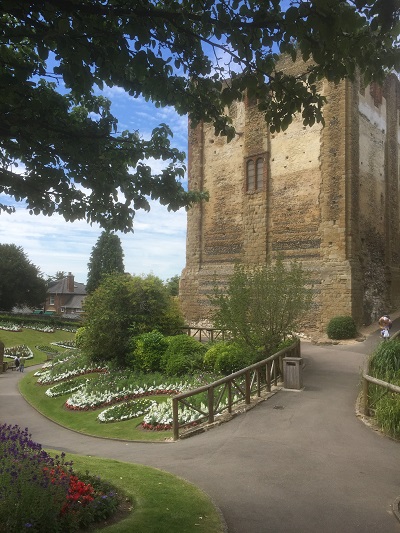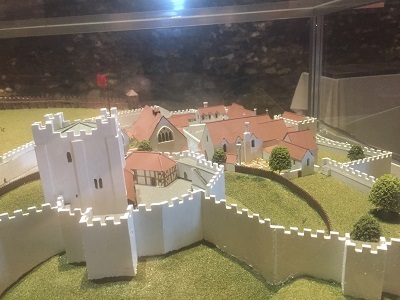
Read report on the Interpretation of Guildford Castle
Guildford Castle is not your typical Hollywood fortress with battlements, turrets and draw bridges. The Victorians turned it into an attractive ornamental ruin set in a pristine municipal park. It was not until 2004 that displays were put in the castle to illustrate its history. We now have the opportunity to go a step further and really bring the castle’s history alive
A report written by the Guildford Heritage Forum shows that Guildford Castle has a lot of stories to tell. It is the finest Norman castle in the county, indeed for miles around and following renovations completed in 2004 it is can hold displays and events. It is a great example of the type of castle that was created by the Normans to overawe their English subject. Through it we can illustrate the life of its inhabitants, how it was run and its relationship with the town.

Guildford has contributed to our understanding of castles in several ways. For many years our only understanding of the castles built after the Norman conquest of 1066 was through the cartoon like images in the Bayeux tapestry. However, in 1949 an excavation by the Surrey Archaeological Society (SyAS) based at Guildford Museum unearthed, for the first time, an example of this type of castle at Abinger. Then, in the 1990s, the SyAS was heavily involved in the excavations at Guildford Castle which recorded the palace of Henry III. Next to Clarendon and Windsor, Henry III spent more money on Guildford Castle than anywhere else and frequently stayed here. A detailed model illustrating the knowledge acquired through this excavation is now in Guildford Castle.

Although Guildford Castle was not directly part of any major political events it can act as a window on three major episodes. William the Conqueror would have passed through Guildford as he circled London after the Battle of Hastings. Guildford was the largest town he would have seen en-route and is recorded in the Doomsday book. William established here the only royal castle in Surrey. The only action that Guildford ever saw was when it surrendered to the French invaders in 1216. This little known invasion was, in fact, a dramatic story that turned Magna Carta from a statement of grievances into the most important document in English history. Finally, the construction of royal palace links us to the extravagance of Henry III, whose arrogance and folly had the beneficial result of giving us our parliament. During a civil war Henry was temporarily deposed and in the year that followed the House of Commons met for the first time. Although Henry regained his throne and built Westminster Abbey parliament remained permanent part of English government.
The report into Guildford Castle starts with a summary of the themes mentioned above it then and then takes the reader on a tour. A timeline of the castle’s history is provided and the report end with an account of the French invasion of 1216 and the story of Adam Gurdon. This is one of the most colourful stories associated with the castle. In the aftermath of the civil war that nearly lost Henry III his throne, Prince Edward fought with rebel leader Adam Gurdon in Alton Woods. They fought long and hard each earning the respect of the other. When Edward finally won he patched up Gurdon’s wounds and led him to Guildford Castle where at a banquet he related the tale to his father the King. Gurdon was pardoned and became friends with Edward serving during the latter’s reign.
Keywords: #castle